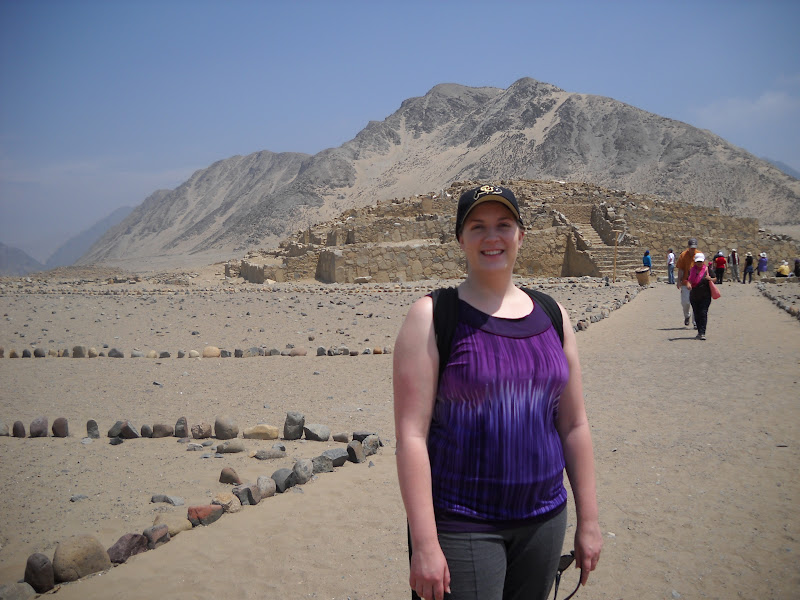So, anyone who knew me in elementary school knows about my obsession with anything Anasazi, Mesa Verde, etc, etc.... Well, this weekend I got to indulge that part of myself with a trip to Caral, Peru. This is a relatively new archaeological site (started excavation 12 years ago), but it is actually the oldest city in the Americas. The civilization that lived in the area of the Supe valley were there for 800 years. Caral is the capital city, although there are a few other sites nearby.
The city was 20 km inland from the sea, and produced crops like cotton that it would trade with the people living on the coast. For this reason, their diet consisted mainly of fish. They were a complex society with very simple technology. They had no pottery, so would carry their water in gourds or baskets. They had no complex tools, fashioning pyramids from polished rocks they used as hammers. They had no tall trees, so the rooms of their houses were small so they could use short trees for roofs. They were always developing new architectural techniques for their pyramids. Whenever they wanted to expand one, they simply build another pyramid on top of the older one. This means some have 20 layers of pyramids in one.
These pyramids were used for religious purposes, and often oriented towards the valley, or according to constellations. At one point, a central figure, who probably united the city into one religion, had all the pyramids re-oriented so that they all faced a large flat area in the middle. This also coincided with the building of the one pyramid used for human sacrifices.

They also had a concert area where they played flutes and horns. Eventually the climate got the better of the civilization though. A change in temperature caused a big rain storm, which led to mud slides. As the temperature reverted to normal, this mud turned into sand, creating large sand storms that destroyed the crops. It is thought that the remaining people of Caral integrated into a society in the north, which had developed art, weapons and city defenses.
You can see the whole album of pictures from my trip in my Picasa web album:
The city was 20 km inland from the sea, and produced crops like cotton that it would trade with the people living on the coast. For this reason, their diet consisted mainly of fish. They were a complex society with very simple technology. They had no pottery, so would carry their water in gourds or baskets. They had no complex tools, fashioning pyramids from polished rocks they used as hammers. They had no tall trees, so the rooms of their houses were small so they could use short trees for roofs. They were always developing new architectural techniques for their pyramids. Whenever they wanted to expand one, they simply build another pyramid on top of the older one. This means some have 20 layers of pyramids in one.
These pyramids were used for religious purposes, and often oriented towards the valley, or according to constellations. At one point, a central figure, who probably united the city into one religion, had all the pyramids re-oriented so that they all faced a large flat area in the middle. This also coincided with the building of the one pyramid used for human sacrifices.

They also had a concert area where they played flutes and horns. Eventually the climate got the better of the civilization though. A change in temperature caused a big rain storm, which led to mud slides. As the temperature reverted to normal, this mud turned into sand, creating large sand storms that destroyed the crops. It is thought that the remaining people of Caral integrated into a society in the north, which had developed art, weapons and city defenses.
You can see the whole album of pictures from my trip in my Picasa web album:
 |
| Caral11.20.2010 |

No comments:
Post a Comment